Struggling to capture and hold your audience’s attention in our mobile-focused world?
In today’s article, we’re exploring mobile-based strategies and practical tips you can use to craft concise and compelling content that resonates with your ideal customer.
By implementing the following techniques, you’ll be able to create engaging content that cuts through the noise and provides immense value for your mobile audience.
Let’s get started.
1. Get your mobile tech and user experience details right
Mobile users expect quick, seamless experiences—but you can’t deliver them without optimizing for mobile first.
That means:
- Your pages need to load and function on mobile devices as optimally as possible
- You need to pay close attention to sizing and placement to reduce lag times
- You need to keep the mobile user experience at the center of your content production plan, i.e., focus on easily digestible content for readers in a hurry
This includes using responsive templates or responsive web design principles, starting with a mobile-first design, and considering mobile users when writing copy and adding visuals.
To check your mobile site speed and other user experience issues, use a website performance checker. You can also implement AWS backup and recovery to make sure your website’s data is secure, reducing potential downtimes.
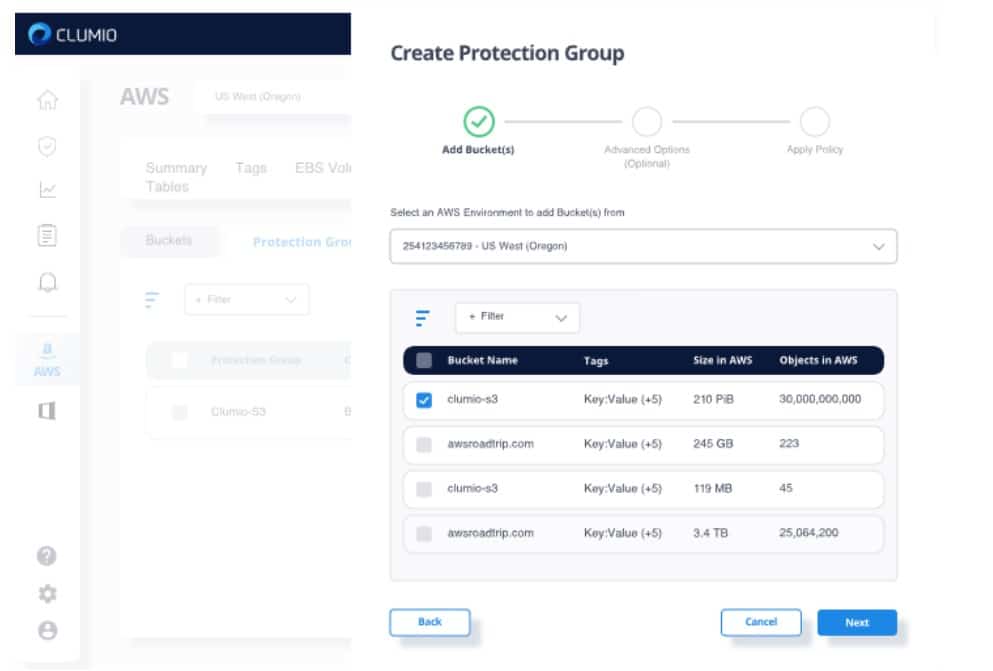
If you run an online store or sell physical or digital products, consider using a Shopify site as your website. Shopify has built-in search engine optimization to give your site an extra leg up.
As an added bonus, all themes available on the Shopify Theme Store are designed with performance and mobile readiness in mind. In other words, your customers can conveniently access your online store from any device without any hassle. When considering Shopify for your e-commerce needs, don’t forget to research the Shopify Website Development Cost to ensure it aligns with your budget.
2. Infuse creative storytelling into short-form assets to keep users captivated
Crafting concise yet captivating content for mobile users on the go is a key strategy for maintaining continuous audience engagement.
While it might sound straightforward, the reality is more nuanced.
The truth is, without careful attention to storytelling, captivating mobile users can feel like an uphill battle where everyone’s competing for the same thing.
House of Joppa, a home accessories and decor Catholic store, serves as a pertinent illustration of infusing storytelling in its mobile content strategy.
In a recent video release, the brand elegantly showcases how to place its beautiful products throughout distinct rooms of a house. The strategic product selection, thoughtful interior design demo, and editing sequence paint a story, inviting its mobile audience to imagine decorating their own homes with its products.
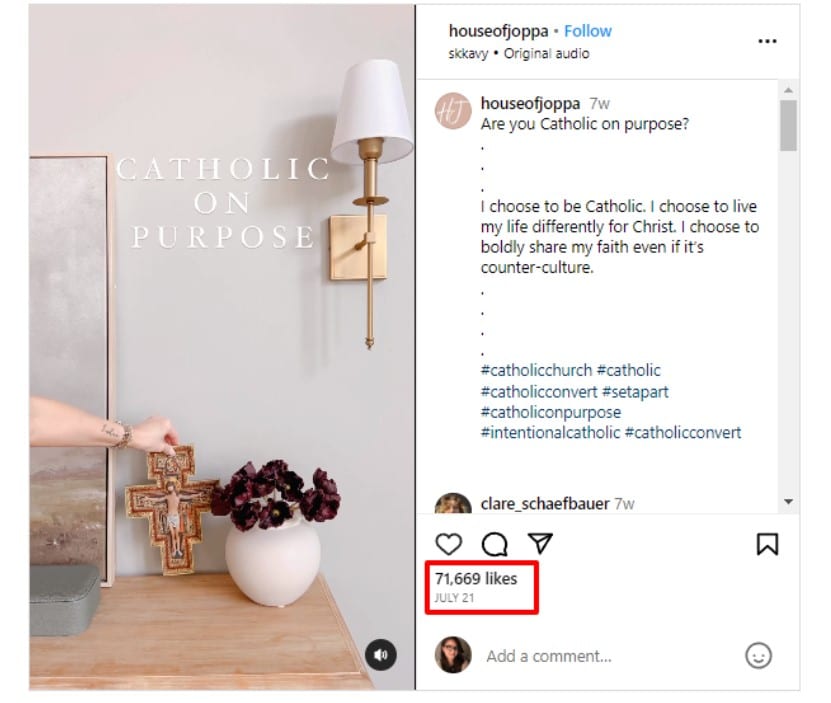
The payoff for using this approach has been substantial.
At the time of this writing, the video has garnered over 70 thousand likes and hundreds of comments, giving House of Joppa plenty of opportunities to connect with its mobile audience and generate leads.
3. Create beautiful and straightforward landing pages
Your landing pages can catapult your sales funnels to success—if you optimize them properly, that is.
To create landing pages for a mobile audience, focus on keeping them as clean and minimal as possible. In other words, leave room for plenty of white space, choose one or a few engaging images, and write value-focused copy that gets straight to the point. More on minding the details in a bit.
Take the following landing page for lab-grown diamonds by VRAI as an example:
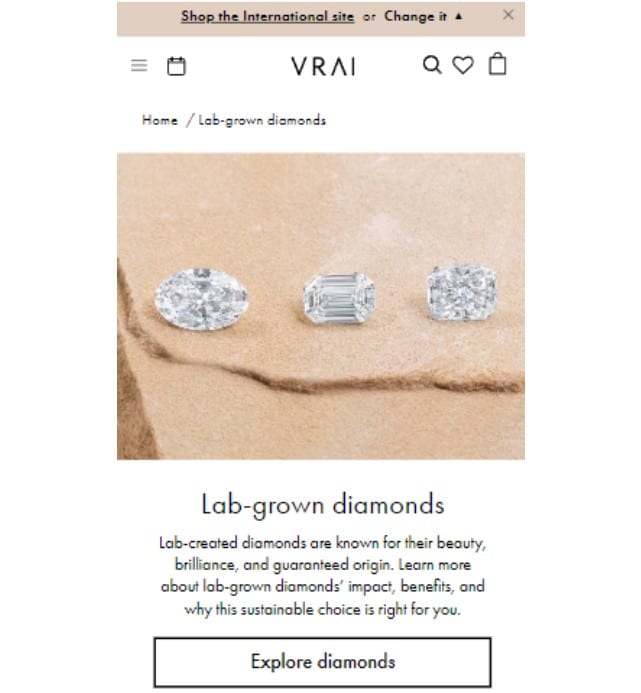
It showcases a featured image, a targeted product, and short, informative copy. It also has a CTA button that’s straightforward and hard to miss.
Any mobile user can view this landing page with ease. This encourages them to take one step closer to becoming a qualified lead and eventually, a loyal customer.
4. Create a set of short and long helpful guides
Mobile users on the go expect resources that are readily available.
Whether it’s a short how-to, tip listicle, or ebook, mobile audiences turn to quick guides:
- For advice
- To get answers to their burning questions
- For local resources, i.e., “The best restaurants in NYC”
- To learn about a topic they’re interested in as fast as possible
Mobile users who have long commutes or downtimes may also appreciate the chance to take a deeper dive into a resource.
To satisfy both kinds of information demand, add a table of contents to your guides and include the most sought-after information at the top. Readers interested in more info can simply keep scrolling to get more value or click a link to get the details they need.
For instance, a mobile user who’s curious about divorce options may turn to resources like a divorce mediation guide or a comprehensive guide to child support.
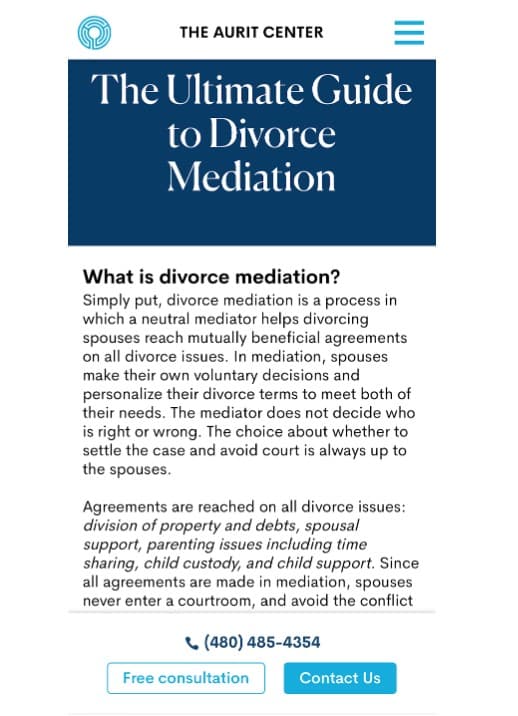
If you take a look at the above image, users who need a quick answer about what divorce mediation means can get the insights they need in the first paragraph. Users who want to explore the topic in-depth, on the other hand, can peruse the guide’s table of contents to jump to specific answers.
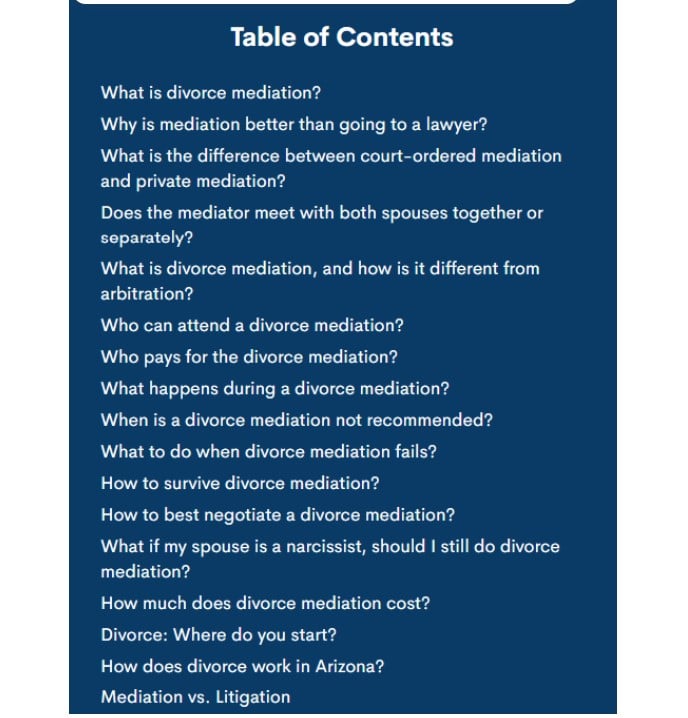
This helps satisfy both mobile users in a hurry and audiences who digest long-form content on their smartphones.
5. Batch sets of on-brand images
Curating on-brand images that resonate with your mobile audience requires careful attention to detail.
Not only should your images look flawless on mobile devices, but it’s also crucial to make sure they look consistent so you can create a memorable experience.
To do so, consider batching several sets of images and using a free online background remover to keep them on brand.
With a background remover tool, you can make your images transparent and then edit them to create unique designs that match your brand’s look and feel.
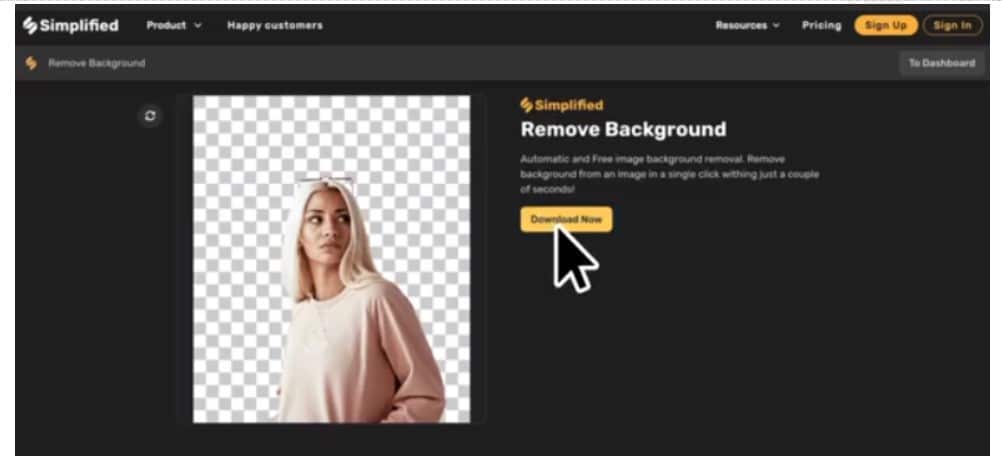
By batching these out, you’ll always have branded images that are ready to go for your mobile campaigns. Simply export your new creations as ‘PNG’ files to retain high image quality across different screen sizes. You might also consider storing these in a DAM (digital asset management software) so you and your team can access them when needed in one place.
You can add these branded images to your mobile-focused:
- Social media campaigns
- Email content
- Blog articles
- Landing pages
- And website as needed.
6. Write bite-sized informative articles
In an information and mobile-first age, bite-sized content has become valuable currency.
But we’re not referring to any kind of short and informative content. We’re referring to value-based articles that you hyper-personalize for your audience.
This means covering topics they can’t stop thinking about, answering their burning questions, and giving them actionable advice that can transform their personal or professional lives for the better.
To create a strategic approach, start by outlining your target audience and crafting buyer personas that describe their needs and pain points.
If you serve a B2B audience, you might add details, such as their:
- Business name
- Business size
- How many years they’ve been in business
- Who their target audiences are
- What specific problems they have and how you can address them better than your competitors
If you cater to a B2C audience, you might add details, such as their:
- Name
- Age
- Income
- Online browsing activity
- What they’re interested in buying right now and why your solution is the best
You’ll also need other important data, such as their ideal messaging style, online reading habits, and top searches.
When you have this information in hand, get into the nuts and bolts of each of their pain points and common searches. Use these details to segment your audience, plan content pillars, and choose relevant main topics for each group.
Once that’s done, you’ll have a robust list of themes to create content on for all of your audience segments.
With your list in hand, use a keyword research tool to brainstorm article titles and look up secondary keywords for each main topic.
Then, finalize your article titles, schedule writing deadlines, and assign content briefs to subject-matter expert writers.
In your briefs, include the main keyword and semantic keywords you’d like writers to include. Consider providing credentials to your SEO tool and a link to the processed search engine results page (SERP) so they can optimize content in real-time.
Batch as many of these assets out as possible—without sacrificing quality.
Then, schedule them to publish on your blog, Knowledge Base, Help Center, and resource section where relevant. You can also repurpose snippets of your posts as infographics, quote images, and video content to use in social media and other channels.
To convey your message clearly and concisely, make sure your writers implement scannable formatting practices and impactful language that resonate with your readers’ style and tone preferences.
Get inspired by Henry Meds’ short-form articles.
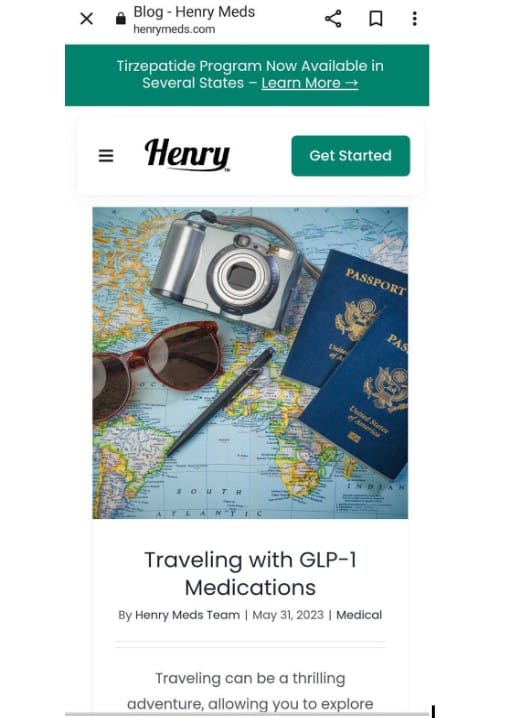
With concise and informative content, Henry Meds turns its audiences’ frequently asked questions (FAQs), pain points, and searches into valuable health articles. Its bite-sized resources, user-friendly design, and quick-loading pages make it easy to stay informed about well-being topics while navigating a busy day.
Some of Henry Meds’ content pillars include Insomnia Therapy, Testosterone Therapy, and Tirzepatide Weight Management.
As you can imagine, it serves the following audience segments:
- People interested in weight loss
- People interested in sleeping better
- People interested in restoring their hormone levels
As far as their topics go, a few that the brand covers include:
- GLP-1 medications
- Compounded semaglutide
- Breakthrough medications
And finally, some of their article titles include “Traveling with GLP-1 Medications”, “Is Compounded Semaglutide Legal?”, and “This Breakthrough Medication Is Revolutionizing Weight Loss”.
This hyper-personalized approach takes “concise and compelling content” to a whole new level. Not only does ultra-tailored content help your audience feel seen and understood, but it also encourages search engines to rank your mobile-focused pieces higher in the SERPs.
7. Use a mind-the-details checklist
If you’ve made it this far, you’ve learned a lot about how to create content that resonates with a targeted mobile audience.
But there are still quite a few details you’ll need to keep in mind to craft the best look, feel, and value for your ideal customer.
With that said, we’ve created the following checklist to help you create the best content possible for people on the go. Don’t forget to bookmark, screenshot, and share this resource with your team for safekeeping!
Here’s the checklist:
Crafting concise and compelling content for mobile users
Complete the following checklist before submitting short-form deliverables for our mobile audience.
➡️ Copywriting best practices
- Use contractions
- Write short and to-the-point sentences
- Use casual language
- Write like a real human
- Write in active voice as much as possible
- Apply value-driven messaging with zero fluff
- Write your copy using the Pain Point – Agitate – Solution (PAS) Framework
- Integrate intentional CTAs that align with our business goals and our audience’s core needs
➡️ Image best practices
- Use responsive images that auto-resize depending on the device screen and specific marketing channel they’re viewed on (add link here)
- Choose images with a vertical format or edit them so they look vertical
- Make sure all image annotations are clear and easy to read — especially on ads and infographics
➡️ Intuitive layout and design best practices
- Use large clean fonts that are clear and easy to read
- Sprinkle in multiple CTA buttons
- Make sure all CTA buttons are easy to notice and lead to relevant, active, and fast landing pages
- Make sure all tabs, menus, and buttons are clear and visible
- Conduct a performance test to make sure the content and the platform it’s on has zero glitches, bugs, or lagging issues
- Make sure users don’t have to zoom in to read anything, look at an image, or understand your offer or CTA
For good measure, here’s a great example of an asset that ticks all of the boxes:
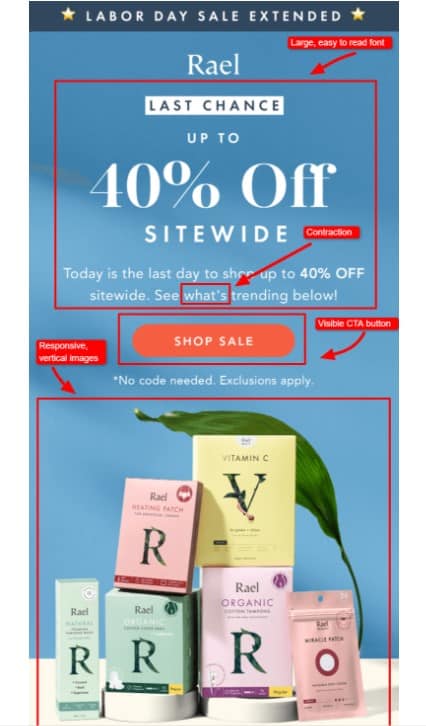
Click the image source link to see the full asset.
Wrap up
As mobile-first SEO continues to take over, crafting concise and compelling content is a pivotal strategy PR reps need to take seriously.
By focusing on responsive design, valuable information, and bite-sized assets, PR reps can build meaningful relationships with their target audiences.
That’s it for now, PR professionals.
Here’s to your success!



